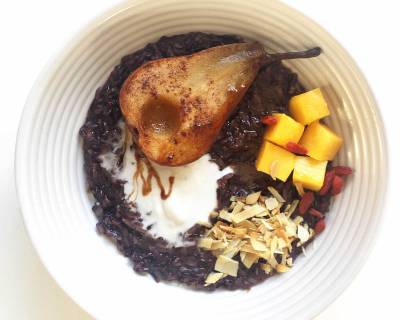Rice is the staple food of the world, succeeded by wheat, and corn. Rice is a high glycaemic index which means it is high in absorbable sugars. With few of the easiest form of carbohydrates in nature, these are light on stomach and are great idea of staple food for gluten-free diet. Since rice contains simpler carbohydrates, it is a quick energy provider, when compared with most other staple foods of the world. Easily digested despite of less fibre, unless it is wild rice or brown rice, owing to simple carbs again. Here are various types of rice you ought to know about, and their relevance in daily food.
Rice has thousands of cultivars and varieties. In general, rice is harvested in 4-6 months of planting, and needs threshing cleaning and milling to get the hull out of the grains and be edible. Various techniques like par boiling or steaming, de-husking, and polishing are carried out to make it edible. Choose the rice according to its suitability to the recipes selected. Rice in itself is gluten free and has been a major ingredient in world cooking, since the human civilization commenced.
Rice Classification Based On Colour
White rice

This is the rice of which the husk is removed and has usually been polished. Though it has the same carbohydrates as the rest of the varieties under this classification, this rice has lesser vitamins, minerals and fiber than the rest. White rice consumes the shortest time to cook, comparatively.
Brown rice

Whole Rice grains with only hull removed is called brown rice. The brown rice is unpolished and hence has all the nutrition of the bran and germ intact. Whole rice has a mild nutty flavour and this rice is particularly rich in thiamine, a B vitamin and iron. Brown rice needs double the cooking time than the white rice. All the recipes that include any variety of white rice can be prepared with brown rice. Note that the brown rice is marginally beneficial than white rice and makes very slight difference when you are on weight moderation diets.
Red rice

Red rice is either partially hulled and hence most of the bran is intact along with germ. Red rice owes its name due to the anthocyanin-imparted red colour of the grain and hull. Red rice also takes longer to cook, almost to that of brown rice. Red rice is used in recipes that usually requires a long soaking time and grinding process.
Black coloured rice

Black rice and wild rice are black in color. Black rice is the deep dark short grain variety of rice now grows largely in China where it originated. Wild rice is a weed variety which grows in shallow waters which is usually thrashed with a stick directly into boats. Both of these cultivars are nutritionally rich than white rice and brown rice, owing to the anthocyanin content and protein, minerals and folate. Cooking needs at least 3 times the water and takes a long time to cook, compared to white rice.
*Know more about black rice and wild rice here-Black Rice & Wild Rice: Are They Same Or Different?
Rice Classification Based On Length Of The Grain
Short grain variety

Short grain rice have a tendency to be stickier than the long grained counterparts. Sticky Jasmine rice is one of the most popular Asian rice (especially in Thai cuisine) which is consumed with gravy dishes or in sushi. Short grain variety are more used in everyday cooking where the plain rice is accompanied with gravy based vegetarian or non-vegetarian recipes to side with. Or these are also used to make flour and recipes that use rice meal or mashed cooked rice.
Long grain variety

Long grain varieties of rice are generally fluffier and light, comparatively. Basmati is one of the most popular long grain variety with mild fragrance. Long grained rice is used to cook various kinds of pilaf and as a finishing cooked ingredient to prepare various recipes that include veggies, steak, or sea food. Many pilaf recipes are naturally colourful with assorted veggies or meat used.
Rice Classification Based On Processing
Parboiled rice & Raw rice
White rice (also black rice sometimes) that undergoes partial boiling or steaming, along with the hull bran and germ intact-for a specified time, and then the hull is removed, is classified as parboiled rice. This process ensured the seepage of most nutrients of the bran into the rice grain (endosperm). Parboiled rice has about 80% of the nutrition same as brown rice. This takes lesser time to cook, than raw rice, since it is partially cooked and thawed. Parboiled rice is usually polished, also. Parboiled rice is mildly translucent unlike raw rice. Raw rice is the processed and polished rice which does not undergo heating process. Raw rice takes longer time to cook, and is low in nutrition when compared to par boiled rice, since the hull and bran is removed without a try to secure the nutrients within the rice endosperm.
Rice Recipes
Rice is used across cuisines of the world to prepare different recipes from grain and rice flour. The recipes ranges from porridges to appam, soups to risotto, fritters to steamed dumplings, pilafs to flatbreads and cake. Here are a sneak peak of diverse 21 rice recipes, out of its wide and vast culinary possibilities.




























